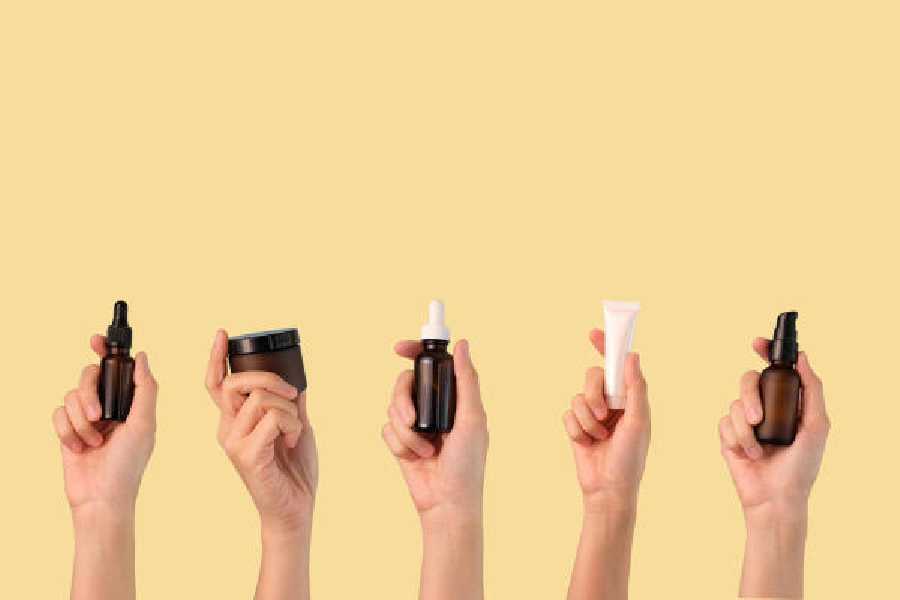It can be hard to feel good about your skincare routine when so many products come in plastic and you’re constantly pushed to try new and more things. The temptation is everywhere: ubiquitous and effective marketing, influencers promoting complex skincare routines and living in a youth-fixated culture in general.
We asked dermatologists, chemists and beauty industry insiders where you can start.
The thing experts generally agree on is that we use far more products than we need or can benefit from. Identifying sustainable products and eco-friendly packaging is important, but reducing overall consumption is more so.
Besides, complicated routines don’t generally improve skin. “Many of the products that people become convinced they need are probably doing more harm than good,” said Dr Molly Hales, a dermatologist and researcher at the University of Chicago, US. In one study, she and her colleagues identified influencers promoting skincare routines that involved up to 21 active ingredients. “As a dermatologist, that’s way more active ingredients than I would ever recommend people be using on their skin,” she said.
So just ask yourself: which categories of products do you really need?
One or two is probably reasonable. “You’ve got to slough away the dirt and the environmental pollutants and the skin cells that are shedding,” Mia Davis, former head of environmental and social responsibility at Credo Beauty, said of washing your face. “But do you really need a scrub and a wash and an astringent? Probably not.”
Much of what the skincare industry is selling has little, if any, scientific evidence behind it. And buying products that do little or nothing for your skin is really the ultimate form of waste. So focus on where the science is, what doctors recommend and what actually works for you.
Dermatologists tend to agree:
- Sunscreen is by far the single most important product for anti-ageing, and it’s frequently overlooked
- Retinol has proven anti-ageing effects
- Vitamin C helps. Invest in a good one if possible.
The rest of the skincare section in the cosmetics aisle is a mixed bag. “Most compounds haven’t been tested head-to-head, so it’s hard to know which ingredients work better than others,” Dr Shoshana Marmon, assistant professor and director of clinical research at the New York Medical College department of dermatology, said in an email. “Marketing usually outpaces good science.”
Where it is not as clear:
- Topical oestrogen, which is promoted to menopausal women for anti-ageing. Safety data is lacking and skin benefits are unproven, Dr Marmon said.
- Collagen, which is not as proven as its pervasiveness in skincare and supplements would suggest. Some studies have found anti-ageing benefits. But evidence is inconsistent, and one recent paper found that pharmaceutical companies paid for the only trials showing positive results from collagen supplementation. Its production has also been linked to deforestation in Brazil.
Plastic problem
We all know the world is swimming in plastic and that we should be cutting back significantly on how much we use.
When it comes to packaging for skincare products, more alternatives are available all the time. An increasing variety of products are sold in glass or aluminium. Solid shampoos, face cleansers and the like have come a long way in recent years.
But the use of petroleum-based substances goes beyond packaging.
A number of synthetic polymers common in moisturisers, face washes and other daily-use products — used because of their cost-effective ability to improve texture and moisture — contain ingredients that some refer to informally as liquid plastics.
And when we wash those products off our bodies, we essentially send a form of pollu- tants called nanoplastics down the drain, experts say. These particles are even smaller than the microplastics we’ve heard so much about and pose their own set of environmental and health risks.
“They will accumulate in food chains differently and be cleared and broken down differently,” said Martin Mulvihill, a chemist and co-founder of the Centerw for Green Chemistry at the University of California, Berkeley, US.
To avoid liquid plastics, check labels for ingredients such as nylon-12, nylon-66 and other nylons; acrylates copolymer, sodium polyacrylate and other acrylates; dimethicone, octamethylcyclotetrasiloxane and other silicones; and polyquaternium.
Other ingredients that pose risks to both human health and the ecosystem include PFAS, the group of so-called forever chemicals (look for “perfluoro” in the name), and anything with glitter (more plastic).
Disposable products, things you use for a few minutes and which then sit in a landfill forever, now seem a standard element of skincare. But few if any are necessary, and all are easily avoided or replaced.
“A big piece of sustainability is that in order to be able to use a plant from Mother Earth, we have to take care of Mother Earth,” said Kristian Edwards, founder of BLK + GRN, a retail store that sells beauty products from businesses owned by Black women. “We need to make sure that in our process of getting these products, we aren’t doing more damage than good.”
NYTNS










